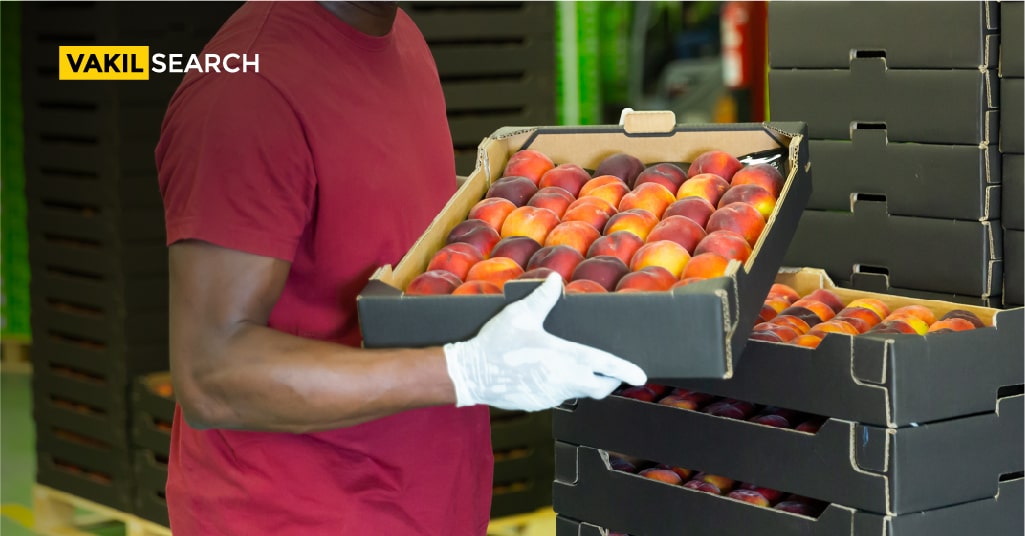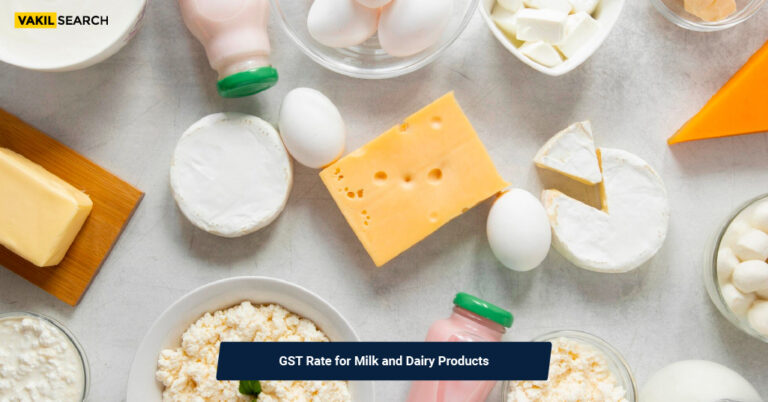If you are curious about the taxes you pay for fresh fruits and vegetables, this article will be fruitful.
With the implementation of GST Rate for Fruits, it is clear that fresh produce has been exempted and further processed, and frozen produce has been taxed to improve the flow of such supply chain systems. HSN numbers 0602, 0709, 0805, 0810, etc., are pertinent.
Items categorized under GST as nil rated
The Following Items Are Exempt From GST
Did the Government of India curb GST certain freshly produced items to fight inflation? More often than not, such measures are taken to bring agricultural products freshly reaped to the consumer’s doorstep. Helping the retailers to create a profitable business model, the Government of India sometimes help the agricultural industry to grow to a large extent. Before we delve into the further intricacies related to the topic, let us quickly check the items which have been exempted from GST as stated:
- Vegetables, roots, and tubers such as potatoes, tomatoes, onions, garlic, cabbage, cauliflower, carrots, and beets, among others, are exempt from GST while they are fresh or cold.
- Fresh fruits, including citrus fruits like oranges, mandarins, grapefruit, and coconuts, apples, cherries, peaches, bananas, pineapples, guavas, and mangoes, are exempt from the GST.
- Fresh nuts like pistachios, walnuts, chestnuts, hazelnuts or filberts, areca nuts, hazelnuts, hazelnuts, hazelnuts, and hazelnuts.
- Vegetables and fruits that have been frozen, whether raw or cooked with additional sugar or another sweetener or by boiling in water.
- Vegetables, fruits, and nuts that have been temporarily preserved but are not fit for immediate eating in that state.
- Dried tamarind and dried veggies.
Fruits and vegetables that are fresh or refrigerated are not subject to tax under the GST, which is in keeping with the various states’ former VAT legislation. Therefore, new, unprocessed products bought directly from an agriculturalist, dealer, or merchant will be exempt.
Readers should understand that such measures are taken occasionally to reduce retail prices for certain commodities. Bringing certain food items within the retail markets can help to improve consumption patterns. However, experts related to the industry state that such things are also restricted from voluminous exports so that domestic consumption can be influenced.
5% Taxed Items
Certain food items can be brought under a minimal slab of tax to be paid. Such commodities are understood to have a seasonal production, and the Government would like to promote the economy with the help of the same. Please note that the following items are taxed on a 5 per cent amount, to be precise
- Jari booti and dried flowers, including bark, roots, dry plants, and herbs.
- Additional dry or frozen vegetables.
- Shelled or unshelled dried areca nuts.
Items With A 12% Tax
These are considered expensive items, and a tax is levied sometimes due to restricted seasonal production.
- Fresh, dried, shelled, or peeled dry fruits.
- Vegetable and fruit juices.
Previously taxed at a rate of 5%, dry fruits are now subject to a 12% tax, which raises the cost of dry fruit purchases.
18% Taxed Items
- Plants preserved by vinegar, acetic acid, or sugar, such as fruits, vegetables, nuts, and other plants.
- Vegetables preserved in different ways, such as tomatoes, mushrooms, etc.
- Nut puree, pastes, jams, and jellies.
Another example of a price increase for end-user consumers is when goods previously subject to various VAT Acts at a rate of 5% are now subject to an 18% tax.
Fresh and unprocessed fruits and vegetables have been excused from certain requirements that apply to the GST rates paid on fruits and vegetables, which is a benefit for the agriculture industry.
Nevertheless, dry fruits and foods prepared from fruits and vegetables, which were formerly subject to a 5% tax, now face higher rates of 12% and 18%, which would have a detrimental effect on FMCG companies. The aggregate GST rate primarily affects end users because formerly taxable items would now be subject to speeds of 12% or 18%, increasing prices and reducing consumption.
Using The GST Portal To Determine The HSN/SAC Tax Rate
- Visit the portal’s home page and log in using your legitimate credentials to access the GST Portal. Select Services > User Services > Search HSN/SAC Code from the drop-down option on the menu.
- check the box next to the HSN code to get started.
- You should choose the tax kind. Choose the tax type you are looking for from the Tax-Type drop-down list.
- Look up HSN Chapters using their name or code. Additionally, fill out the ‘Search HSN Chapter by Name or Code box with the chapter’s name or the HSN code.
- Also, enter the HSN code for the items you want the tax rates to be shown in the “Search HSN Code” box.
- From the drop-down option next to “Effective Period,” choose the most appropriate dates.
- Click the menu item labelled “Search.” Once all the information has been input, please complete the form and click ‘Search’.
- You must also choose the State for which you want to look into the tax rate by choosing Tax Type while looking into the SGST.
- Considering the standard audio codecs, starting is made possible by checking the SAC box.
- You can choose the tax you desire to pay. Pick the tax type from the drop-down menu.
- In the area labelled “Service by Name or Code,” input the Service Classification Code (SAC) for the pricing that catches your attention.
- Select a suitable date. Choose the necessary dates from the calendar and enter them in the field marked “Effective Period” on the form.
- To start the search, click the “Search” button. You can choose the option ‘Search’ from the list of choices using the drop-down menu. The user can access the specifications after the preceding procedures have been completed.
How To Use The HSN Code
Each category of objects in the system is coded with six numbers and organised logically and legally into more than 5,000 different groups. It is supported by well-stated rules that are intended to achieve uniform categorisation.
Conclusion
Using HSN codes, we can arrange and make the GST (Goods and Services Tax) more transparent and organised. Using such codes can distinctly help in the categorisation of products as well. Using HSN codes alone won’t be adequate to give a complete explanation. In the long run, filing GST reports electronically will streamline the procedure and save you time.
As a result, it is necessary for the seller or service provider in charge of the sales contained in the slabs, as mentioned above, to include a breakdown of the sales in his GSTR-1, HSN by HSN and SAC by SAC. You can rely on us to provide your firm with qualified personnel and help you meet your tax obligations, including GST, HSN, CGST, and others, so you can concentrate on managing your enterprise. Although the blog can be helpful in the given perspective, we suggest you get in touch with Vakilsearch to understand better.
Also Read,










